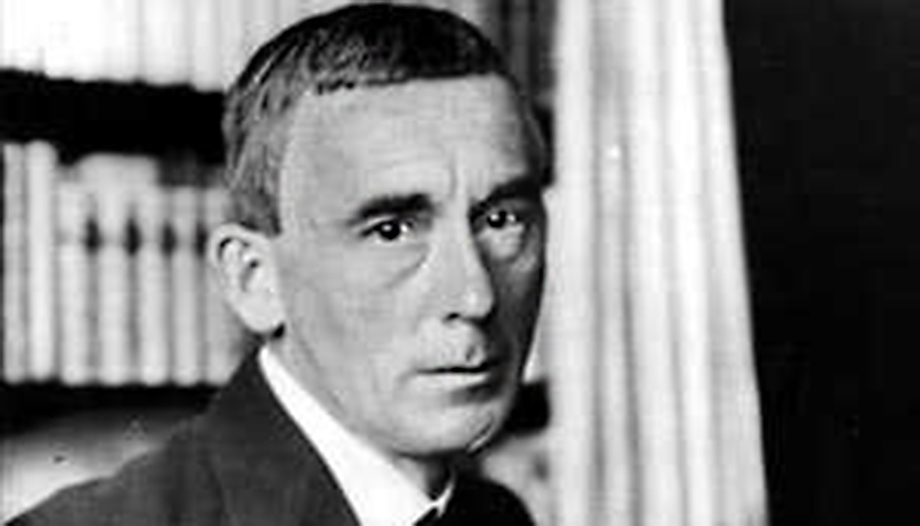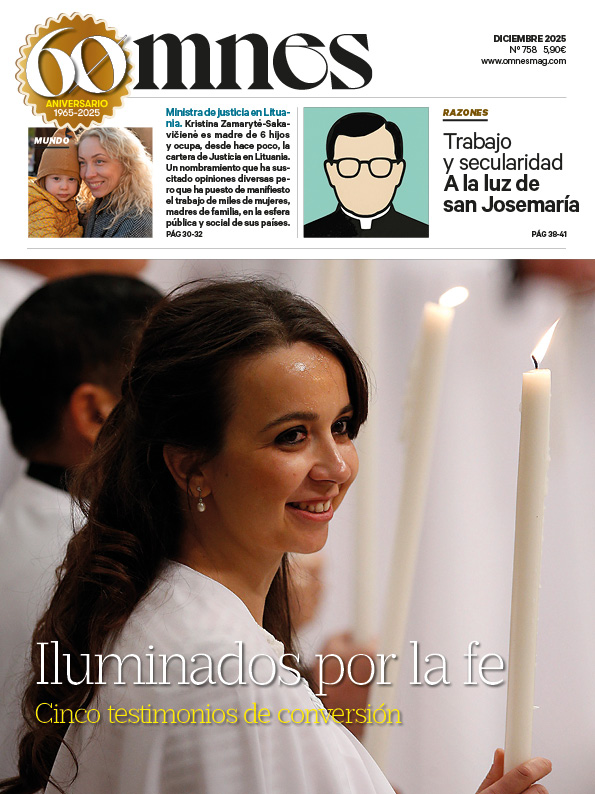In his best-known portrait, Hugo Ball (1886-1927) appears disguised as a bishop, while reciting the Dadaist poem Karawane in the basement of a café in Zurich in June 1916. This scene constitutes one of the most singular moments of contemporary art and of the personal itinerary of its protagonist. The effect of the reading of the poem seemed to move him more than any other: "My dress as a bishop and my regrettable appearance at the last 'soirée' give me pause for thought. The setting of the Voltaire in which it took place was unsuitable and my inner self was not prepared for it." (The flight of time, p. 145). The aim of Ball's artistic and intellectual experimentation could well be summed up in the sincere eagerness to find "...".the" the right place for that costume "columnar" y "the" inner state for its sad "priestly lamentation" (pp. 138, 139). Gradually, Ball became convinced that place and state converged in the Church of his childhood, Catholicism.
Cabaret Voltaire
Ball deserves to figure in any art history for three reasons. First, because he founded with his future wife, Emmy Hennings, the Cabaret Voltaire on February 5, 1916 in Zurich. This experimental room would remain open until March 1917. Paul Auster underlines the audacity of the gesture: "The questions of Dadaism are still ours." (The flight of time, p. 7). Moreover, Cabaret Voltaire was pioneering in many ways. In it, Ball and Hennings explored surrealist artistic stakes before Salvador Dalí (1904-1989), or "performative" and ephemeral before Joseph Beuys (1921-1986). Secondly, because Ball offers the most convincing account of the origin of the word "performative.Dada"The term "cabaret" has been used ever since to refer to the artistic manifestations that were performed in the cabaret sessions. Finally, because he linked his artistic practice with a deep need for redemption. His desire for regeneration focused on the search for a new language, pure and uncorrupted, free of the verbiage of journalism, innocent as the babbling of a newborn, even if it was absurd, meaningless and incomprehensible.
Dadaism
Thus, Ball broadened the conception of what was considered art in his time and baptized an artistic movement ".behind whose aggressive and disconcerting appearance". -wrote Hermann Hesse (The flight of time, p. 18)- "not only youth and the desire for renewal, but also a great desperation for the destitution of his time.". Where did the origin of this destitution lie? In Ball's eyes, it was directly related to "rationalism" y "its quintessence, the machine" (p. 56). In his opinion, rationalism inaugurated a necrophiliac form of materialism thanks to the development of technology: "The machine confers on dead matter a kind of apparent life. It moves matter. It is a ghost" (pp. 28 and 29). The poverty that surrounded Ball's life ranged from economic hardship to the intimate and solid rejection of "the machine", with the consequent inner exile from an increasingly mechanized world. "War" -Ball notes on June 26, 1915, "is based on a crass error. Men have been confused with machines. Machines should be decimated instead of men. If one day the machines run alone and on their own, it will make a little more sense. Then the whole world will rejoice, and rightly so, when they tear each other to shreds." (p. 59).
As he neared the return to his boyhood faith, definite in 1921, a certain hope in a deus ex machina encourages and supports it: "The head of Christ, brimming with blood, will suddenly emerge from the machine in pieces." (p. 280). The believing Ball contrasted faith in a personal God who speaks and suffers with the violence of the modern machine. His critique of rationalist philosophical systems also makes full sense here and complements his artistic experimentation: "I am not a believer, but a believer in the machine.There is no abstract motor, as Spinoza assumes. The movement that impels us can only be conferred by a person. Personare' means to resonate" (p. 310). The artist who in 1916 was babbling in the guise of a bishop, weeping for Europe in a cabaret of illustrious name, discovers himself in 1921 as a hermit in a desert of machines, "..." (p. 310).touched in the noblest part of [his] innermost being": "The divine word is a shock to the innermost being" (ibid.). How could he lead what at first sight seems to be a mockery of religion to the mysteries of the liturgy? His answer is unwavering: "You have to get lost if you want to find yourself." (p. 46).
The edition of Hugo Ball's conversion diary, published by Cliff with the title The flight of timeis accompanied by an essay by Hermann Hesse, winner of the Nobel Prize for Literature in 1946, and a text by the American writer Paul Auster. Here are a few lines from each of them. Hesse writes about Ball: "It was not a question of piety or any kind of faith, nor of a particular type of Christianity or Catholicism, but of religiosity par excellence: the ever-awakening, ever-renewed need for a life in God, for a meaning for our actions and ideas, for a standard of thought and conscience that is above time, that is free from disputes and fads." (p. 20). The forcefulness of this statement is impressive. And in turn Auster writes: "For his intellectual courage, for the conviction with which he faced the world, Hugo Ball stands out as one of the exemplary spirits of our time.". Undoubtedly, he is a frontier artist who continues to invite us to think almost a hundred years after his death.








